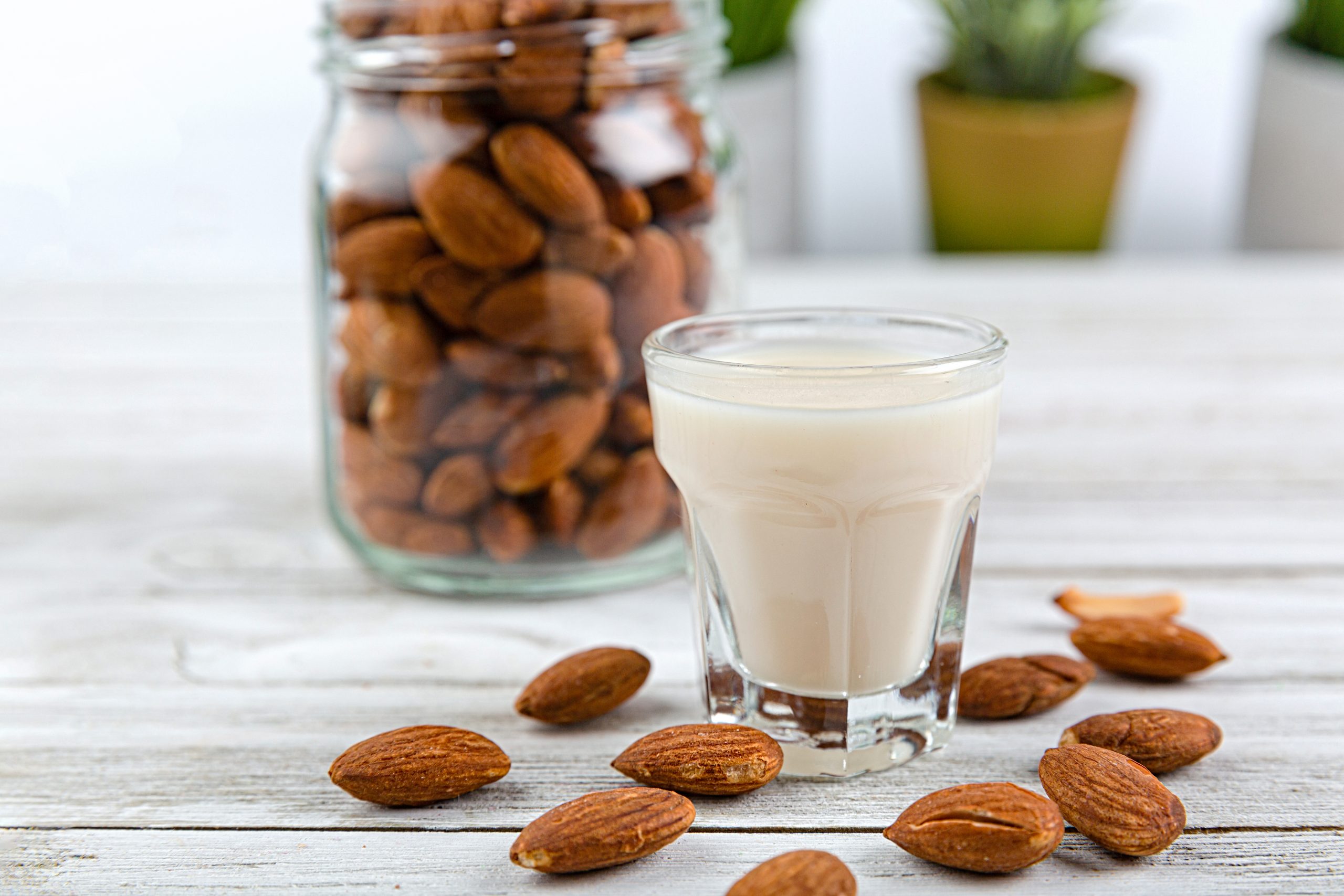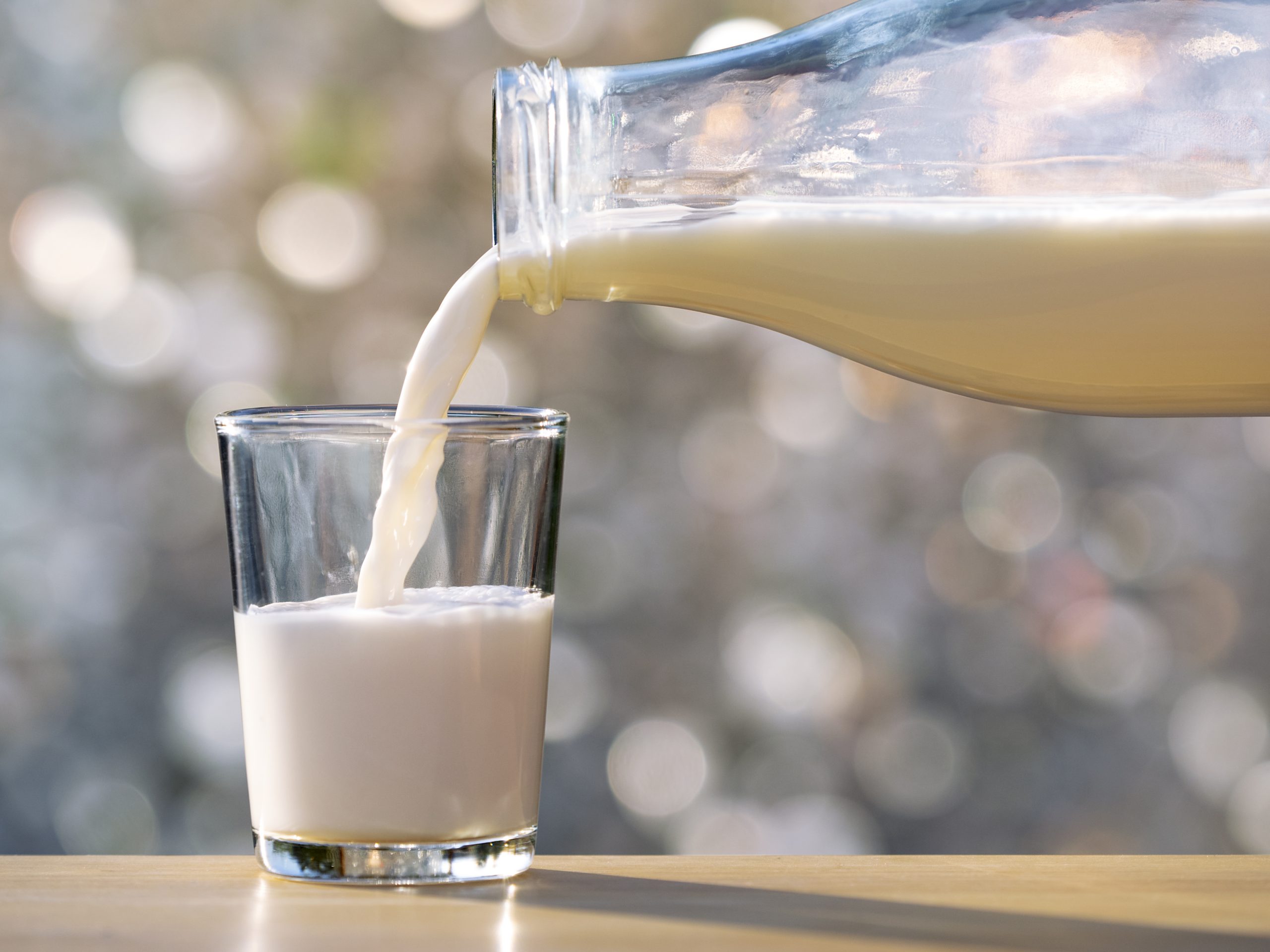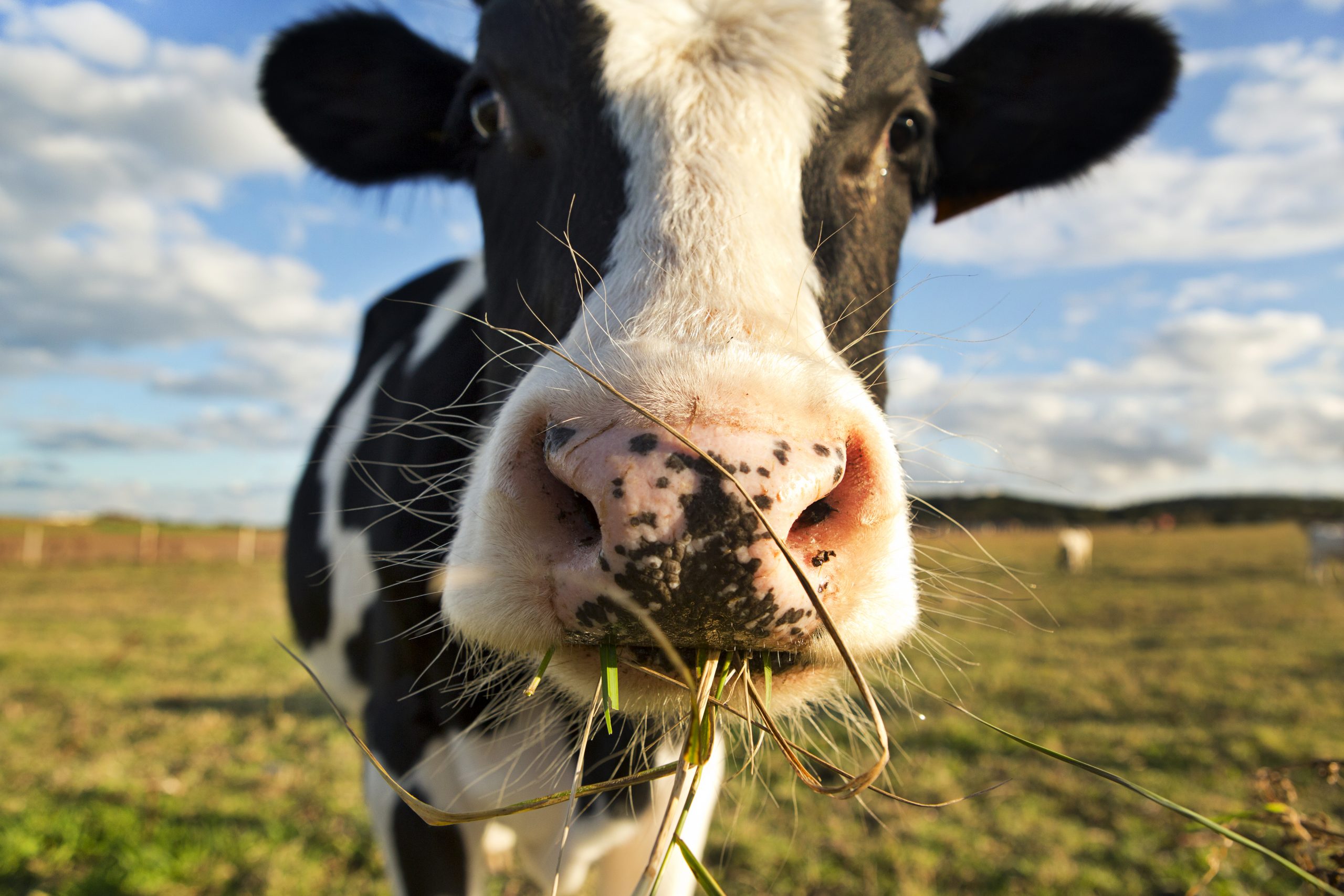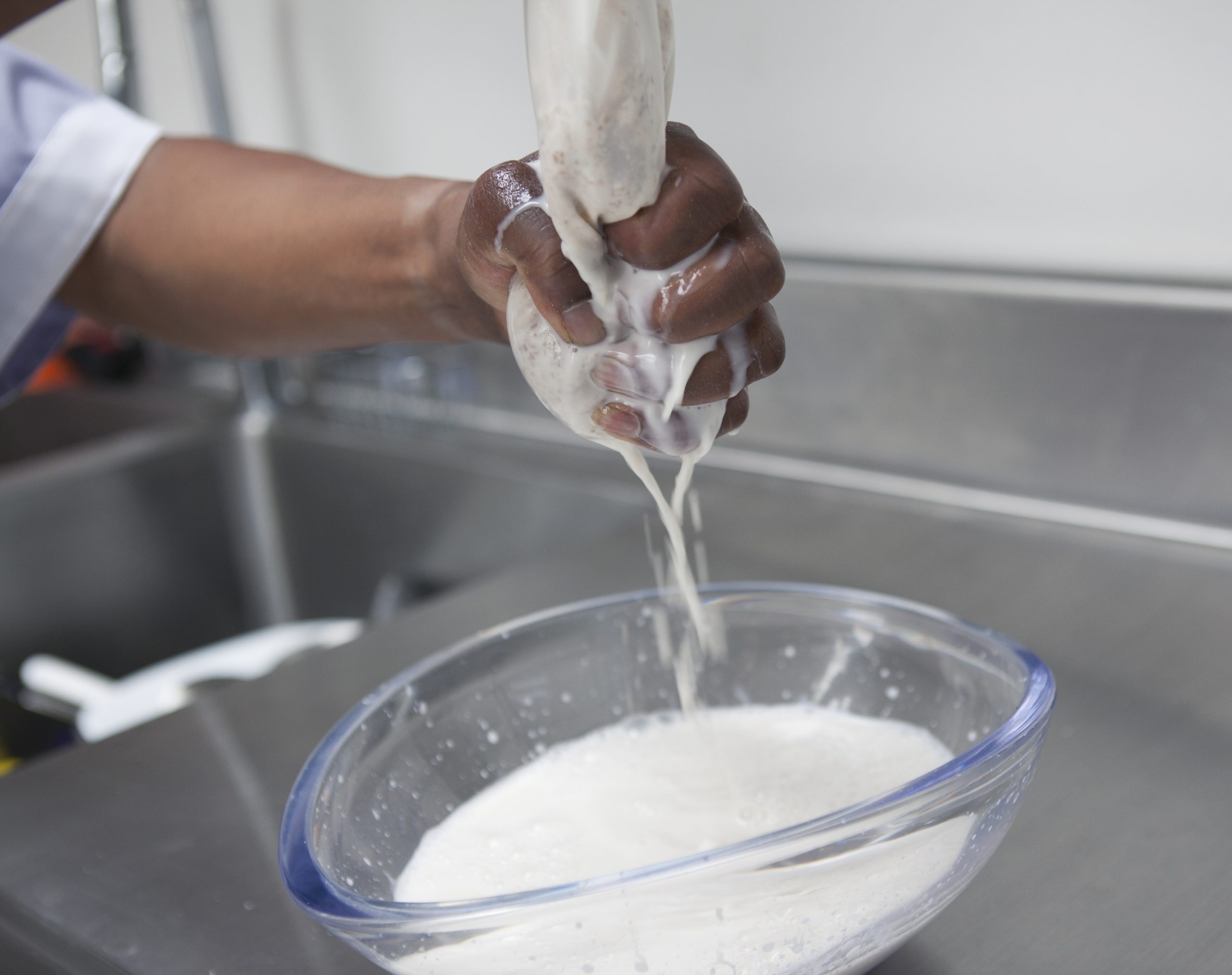Curious Questions: How is plant-based milk made?
Martin Fone takes a deep dive into the world of plant-based milks and discovers that the dairy alternatives have been around for a lot longer than we may have thought.


Unable to spot a trend until its tail lights are disappearing over the horizon, I am not one of the 32% of Britons, who, according to a recent survey from Mintel, drank plant-based milks in 2021, up from 25% in the previous year. Even more marked is the take up amongst those aged between twenty-five and 44, standing at 44 per cent. Oat milk is the hottest of the so-called alt-milks, sales, in a market worth £392m in 2020, doubling from £74m in 2019 to £146m. There is even a World Plant Milk Day, August 22nd if you want to note it in your diary.
Although the average person’s daily consumption of dairy milk is down by 50% from its heyday in the 1950s, it, too, is experiencing its own minor renaissance, with sales worth £3.2bn, up last year by £100m. Scoring highly on price, convenience, and ubiquity, cow’s milk has been part of man’s diet ever since cattle were first domesticated, some six to eight thousand years ago.
With the environment, sustainability, and climate change hot topics these days, there is clear evidence that all non-dairy milks are better for the planet than cow’s milk. Science published an article in 2018[1] in which researchers from the University of Oxford showed that the production of a 200ml glass of cow’s milk results in three times more greenhouse emissions (0.63kg) than the heaviest plant-based emitter, rice (0.23), significantly more land usage (1.79 square metres) than oat (0.15), the most land hungry plant, and consumes more water (125.6 litres) than the thirstiest alternative, almond (74.3). The figures give food for thought.

Proponents of cow’s milk argue that it is a nutrient-rich drink, providing nine essential nutrients, including calcium, potassium, and vitamins D and K, which our bodies cannot produce and are needed to strengthen our bones. Only soy milk truly compares to the nutritional value of cow’s milks, while other plant-based milks rely on supplements, thickeners, natural flavours, and sugars to increase sweetness and palatability. It is a nuanced choice.
A historical perspective gives a lie to the contention that plant-based milks are just a modern fad, whose fortunes will wane as quickly as they have risen. After all, the milk of a coconut has been drunk ever since man first worked out how to crack its hard shell. Etymologically, milk was used as a term to describe the milk-like juices or saps from plants from the early 13th century. Even more intriguingly, the earliest recipe books in English contain references to the use of plant-based milks.
The Forme of Cury, written in 1390, includes a recipe for blank maunger, probably a dish derived from the Arabs but blander due to the paucity of spices available. Along with rice and capons, sugar, salt, this dish, often given to invalids to strengthen them up, used almond milk as its base. Utilis Coquinario, a cookbook written at the beginning of the 14th century instructs the reader on how to make butter of almond milk. In the earliest German cookbook, dating from around 1350, Das Buch von Guter Spise, almost a quarter of its recipes use almond milk.
Almonds were an expensive commodity, even though they were widely grown in England, three times the price of a pint of butter, putting them ordinarily beyond the reach of all but the wealthy. Butter and milk made from almonds were especially favoured by those who wished to observe the letter, if not the spirit, of the Church’s restrictions on the consumption of meat and dairy products during Lent. As they were plant-based, they could be enjoyed with a clear conscience.
Sign up for the Country Life Newsletter
Exquisite houses, the beauty of Nature, and how to get the most from your life, straight to your inbox.
Soya milk, made from the soybean, has an equally long pedigree, initially in China, and is the most widely recognised of the plant-based milks. First mentioned in Chinese texts from around 1350 and in recipes in cookbooks from the 17th century, it was also served hot in tofu shops and drunk for breakfast. The bean was “discovered” by occidentals in the late 19th century, the term “soy-bean milk” first appearing in a report produced by the US Department of Agriculture in 1897, comparing its attributes with those of cow’s milk.

An early advocate of the benefits of soya milk was Li Yuying who established the first manufacturing unit in Colombes in France in 1910 and held British and American patents for production processes. What to call it, though, was a question which mired soya milk producers in contentious litigation with authorities and dairy farmers for decades. The issue was only resolved in the United States in 1974 when the courts ruled that it was a “new and distinct food” rather than ersatz milk, while in Britain in the 1970s it had to be called “liquid food of plant origin” and then “soya plant-milk”.
The 1970s and 80s saw improvements in production techniques, enhancements to taste and consistency, and the development of Tetra Pak packaging extended shelf-life, helping soya milk to establish pre-eminence amongst other plant-based milks. The emergence of strong challengers, though, in the form of oat milk and, the new kid on the block, potato milk, looks set to change that.
Potato milk, available from on-line providers and, since February 2022, in Waitrose stores, is even more sustainable than any other plant-based milk currently available. According to its manufacturer, Swedish-based DUG, winner of the “Best Allergy-Friendly Product” in the 2021 World Food Innovation Awards, potatoes are twice as land efficient as other plant-based options and use 56 times less water than almonds. Dairy-free, and minus gluten, casein, fat, cholesterol, and soy, potatoes are a good source of vitamins D and B12 and the milk, which is very creamy and tastes good in coffee, is fortified with important vitamins and minerals.

The internet is abuzz with recipes for home-made potato milk. The rub, of course, that there is a bewildering range of varieties of potato with different textures, flavours, starch content, and sweetness, all of which will impact the taste of the milk. It is also worth noting that the first company to launch a potato-based milk, Veggemo, in October 2015, is no longer trading, its product panned for its creamy but bitter taste, so beware.
Leaving that aside, to make your own, boil one and a half cups of peeled potatoes in four cups of water until they are soft, but not falling apart. Remove the potatoes, add enough warm water to the remaining boiled water to bring it back to four cups, and place the potatoes and liquid in a mixer, with vanilla extract, almond slices, or sweeteners for added flavour. Blend for five minutes, strain the liquid and refrigerate it for a few days before using.
All nut, bean, or water-base plant-based milks are made using a similar process. The main ingredient is soaked in water for several hours, before being blended into a puree which is then filtered to separate the milk from the plant matter. The milk is then sterilised by boiling and flavours are added to enhance the taste.
Plant-based milks have long been with us and will continue to offer us an alternative for years to come.
[1] https://www.science.org/doi/10.1126/science.aaq0216
After graduating in Classics from Trinity College Cambridge and a 38 year career in the financial services sector in the City of London, Martin Fone started blogging and writing on a freelance basis as he slipped into retirement. He has developed a fearless passion for investigating the quirks and oddities of life and discovering the answers to questions most of us never even think to ask. A voracious reader, a keen but distinctly amateur gardener, and a gin enthusiast, Martin lives with his wife in Surrey. He has written five books, the latest of which is More Curious Questions.
-
 Designer's Room: A solid oak French kitchen that's been cleverly engineered to last
Designer's Room: A solid oak French kitchen that's been cleverly engineered to lastKitchen and joinery specialist Artichoke had several clever tricks to deal with the fact that natural wood expands and contracts.
By Amelia Thorpe
-
 Chocolate eggs, bunnies and the Resurrection: Country Life Quiz of the Day, April 18, 2025
Chocolate eggs, bunnies and the Resurrection: Country Life Quiz of the Day, April 18, 2025Friday's quiz is an Easter special.
By James Fisher
-
 Curious Questions: Did the Victorians pave the way for the first ULEZ cameras in the world?
Curious Questions: Did the Victorians pave the way for the first ULEZ cameras in the world?Martin Fone takes a look at the history of London's coalgates, and finds that the idea of taxing things as they enter the City of London is centuries old.
By Martin Fone
-
 Curious Questions: What are the finest last words ever uttered?
Curious Questions: What are the finest last words ever uttered?Final words can be poignant, tragic, ironic, loving and, sometimes, hilarious. Annunciata Elwes examines this most bizarre form of public speaking.
By Annunciata Elwes
-
 Curious Questions: Why do we still love pirate stories, 300 years on from Blackbeard?
Curious Questions: Why do we still love pirate stories, 300 years on from Blackbeard?Tales of swashbuckling pirates have entertained audiences for years, inspired by real-life British men and women, says Jack Watkins.
By Jack Watkins
-
 Curious Questions: Why is race walking an Olympic sport?
Curious Questions: Why is race walking an Olympic sport?The history of the Olympics is full of curious events which only come to prominence once every four years. Martin Fone takes a look at one of the oddest: race walking, or pedestrianism.
By Martin Fone
-
 Curious Questions: Where does the phrase 'daylight robbery' come from? It's literally about the theft of daylight
Curious Questions: Where does the phrase 'daylight robbery' come from? It's literally about the theft of daylightMartin Fone tells a tale of sunshine and tax — and where there is tax, there is tax avoidance... which in this case changed the face of Britain's growing cities.
By Martin Fone
-
 Curious Questions: Is there a way to win at rock, paper, scissors?
Curious Questions: Is there a way to win at rock, paper, scissors?A completely fair game of chance, or an opportunity for those with an edge in human psychology to gain an advantage? Martin Fone looks at the enduringly simple game of rock, paper, scissors.
By Martin Fone
-
 Curious Questions: Is being left-handed an advantage?
Curious Questions: Is being left-handed an advantage?In days gone by, left-handed children were made to write with the ‘correct’ hand — but these days we understand that being left-handed is no barrier to greatness. In fact, there are endless examples of history's greatest musicians, artists and statesmen being left-handed. So much so that you'll start to wonder if it's actually an advantage.
By Toby Keel
-
 Curious Questions: Why does our tax year start on April 6th?
Curious Questions: Why does our tax year start on April 6th?The tax-year calendar is not as arbitrary as it seems, with a history that dates back to the ancient Roman and is connected to major calendar reforms across Europe.
By Martin Fone